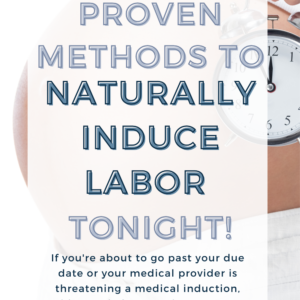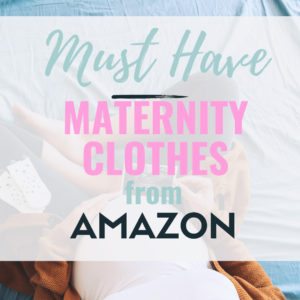It’s your legal right to play a key role in the care and decisions that affect you and your baby. That’s especially important if you want a natural birth with few interventions and a health care provider that respects your birth plan. Read on to learn about and decide on the right birthplace for natural birth for you.

Why you Need to Find the Right Birthplace
Your caregiver’s approach to care depends on education, experience and perception of labor and delivery. If your care provider believes that birth is a normal, healthy process and typically safe than medical interventions will be few unless problems arise. On the other hand, if your care provider views birth as unpredictable, dangerous and potentially unsafe, medical procedures, tests, interventions and medications might be recommended more often than needed.
Although both types of care want the best results – a healthy baby and mother – they have vastly different approaches. Finding the right care provider will significantly impact the outcome of your prenatal care and labor and delivery experience.
Most women simply continue with the OB practice without realizing that they have the right to choose a provider who suits them best. Or some women simply don’t have preferences or put their faith in their doctor or health care provider to decide for them
However, if you have a birth plan in mind or want to have more of an input in the care and choices for you and baby, choosing the right birhtplace is really important. It’s even more important if you want a low intervention or epidural free delivery. Finding the right birthplace for natural birth should be your top priority.
[convertkit form=2895678]
Types of Labor and Delivery Birthplaces
The best place to give birth is somewhere you feel safe and comfortable. A safe and comfotable birth environment is one of the best ways to create an optimal space for a focus and relaxation. The more you can focus and relax during birth, the better your labor will progress and the less likely it is that interventions will be needed.
The feeling of comfort and safety in you birthplace primarily comes from two places.
First, you need to feel confident in your care providers. While you’re laboring, you need to know that you can focus on yourself and your body, while your provders understand your birth plan and have your best intersts in mind. If during labor, you’re worried that your birth preferences will be overridden or you don’t trust your care provider and her suggestions, you’ll be distracted during labor which can lead to a longer and more painful birth experience.
Secondly, you need to like the birth environment itself. Research shows that a mom’s labor can stall when transitioning to a new envionrment like your birthplace. If you don’t like your surrondings or feel uncomfortable, your body will sense that discomfort and stall labor until you can find security. It’s natures design to ensure baby’s being born into a safe environment.
Related: How to Create your Ideal Peaceful Birth Environment
That all starts while researching and choosing your birthplace and caregiver as early as you can.
Hospital Birthplace
Most women deliver in a hospital. It’s the most easy and readily available option in most towns and cities. Not all hospitals are created the same, and they vary widely in services they provide, policies, procedures and practices.
A hospital can even be a good birthplace for natural birth. Knowing a hospital’s stats on intervention rates, epidurals given, and emergency and non-emergency cesesarian sections can help you determin if a hospital is right for you. You’d also be interested in finding out postpartum and baby care for skin-to-skin, rooming in, breastfeeding and nursery accomodations.
It’s important to know that more than one care provider may deliver at a hospital. So while hositals will have their own set of policies and regulations, an individual OB/GYN practice may have their own policies and regulations too. While meeting with your health care provder in prenatal visits, you can ask them these questions to understand their policies and practices.
Depending on your health care coverage and where you live, you may not have a choice in hospitals. If you do, you don’t need to choose the hospital that’s closest to you. Labor typically lasts for hours and you’ll have plenty of time to get to your preferred hospital before baby’s born.
If you don’t have a choice of hospitals, you can learn what to expect at the hospital available by asking questions and taking a hospital tour.
Hospital Birth

As mentioned, all hospitals differ in their own practices, policies and procedures. The following is what you can typically expect if you choose to birth in a hospital.
Hospital staff rotates through a schedule. That means you won’t have any say over who works with you when you go into labor. This includes, nurses, doctors, anasthesiologists and so on. When you go into labor, whomever is working or is on call is who will care for you. Typically, you’ll rotate through an OB/GYNs practice so you at least meet everyone once before they deliver your baby.
This also means you don’t have a choice in who administers your epidural if you should need or choose one. This means it could be a nurse anesthetist, an anesthesiologist, or a resident (physician-in-training). When considering a hospital, you can find out the credentials of its anesthesia staff.
Most hospitals have individual birthing rooms where you labor and deliver baby and stay postpartum. Other hospitals have seperate rooms- one for labor and delivery and one for postpartum recovery and stay. Rooms typically have a T.V., a chair for your husband to stay or sleep, showers and bathtubs, birthing balls and peanuts, with hospital and emergency equiptment available.
Questions to Ask when Choosing a Hospital
To learn about a hospitals policies, routines or practices, you can visit their website, ask your health care provider or take a hospital tour. Should you discover that the hospital has a routine or standard procedure that you don’t agree with, you can always switch care providers, or you can you can talk with your doctor. In either case, hiring a doula can positively impact your birth experience and outcome.
Hospital Tour
A lot of expecting parents like to take a hospital tour before going into labor. Practicing directions to the hospital, seeing what the labor and delivery room looks like, preregistering, and even meeting hospital staff can be really comforting.
Visit a hospitals website to register or schedule a tour in person or virtually.
Hospital Birth Candidates
Most pregnant mamas give birth in a hospital. A lot don’t switch care providers when becoming a prenatal patient and OB/GYN practices all deliver at a hospital. It’s also the most available facility for birth. Midwife home birth or birth center options can be far and few between. Not all towns or cities has this as a nearby option.
You’re also a candidate if you’re a high-risk patient. This means mamas who have gestational diabetes, high blood pressure, multiple births, history of health complications and more. It’s also for babies with known or possible complications or potential for premature birth. A hospital is the safest place for you and your baby to be closely monitored and have resources and medical equipment for emergencies.
A hospital can also be a good birthplace for natural birth. Some hospitals are making advances toward a more natural, intervention-free route. Some even have doulas and midwives on staff. It provides a sense of security in the event a medical situation arises, or she decides to have pain medication, the resources are readily available.
Outside a Hospital Birthplace for Natural Birth

In some areas, women with low-risk pregnancies have the option to choose a birhtplace outside the hospital. This means birthing at home or in a birth center and would include a relaxing, low-tech environemtn with personal care and less interventions. An out of hospital birth is a great birthplace for natural birth.
Low-Risk – a pregnancy is typically considered low risk if you’re someone in good health with no previous medical or pregnancy-related problem. You may be considered low-risk if you are in good health, between the aes of 17-35, having an uncomplicated pregnancy, or a having a single birth.
Unlike a hospital delivery, in this case you’d know who would deliver your baby. Typically, a midwife would be your primary care provider. You’d make a plan with her to meet her at the birth center or at your home for delivering your baby.
Out of hospital births are considered safe (and in some cases safer) for women who are low-risk, have had good prenatal care, have skilled care and a hospital back-up plan if needed. For these reasons, out of hospital births are less complicated and include less medical interventions.
Because less medical equiptment and interventions are used, home births and birth centers can be less expensive than hospital births. However, some insurances don’t cover the cost of out of hospial births. Talk with your insurance provider for details and related expenses.
Questions to Ask When Considering an Out of Hospital Birth
If it’s determined you’re a low-risk mama and a good candidate for an out of hospital birth, there will still be questions you want to ask to determine if it’s a good choice for you.
Visit a birth center’s website for their FAQ page or to schedule a tour.
Home Birth Candidates
You’re a good candidate for an out of hospital birth if you’re in good health, have a low-risk pregnancy, and want an intervention and epidural-free delivery. There will be an initial screening assessment done by your midwife to see if you qualify for an out of hospital delivery.
Should problems arise during prenatal care, such as gestational diabetes, high blood pressure, IUGR, placenta previa and so on, you may be transferred to a hospital or obstetrician for the remainder of your care. All of this is to ensure the health and safety of both baby and mom.
Even with careful screening, some mothers are transferred to a hospital during or after delivery for unforeseen reasons. Birth centers and home birth midwives will have an affiliation with a hospital and protocol for transferring you to a hospital if needed.
Related: Find a Birth Center Near You
Most transfer are for non-emergent reasons, like a change of mind of pain medication or failure to progress. However, some transfers are medically necessary. Reasons for these would include but aren’t limited to: fetal distress, placenta issues or hemorrhage. Midwives are trained and ready for emergencies like these. They have medical equipment necessary to be able to stabilize mom and baby for transfer for further medical care.
Health Care Coverage
Having a baby is exciting! It can also be consuing and expensive. Get ahead of your birth-related bills by figuring out your insurace. And just like choosing your birthplace, you can also switch and choose an insurance that’s best for you.
A midwife-attending birth in a home birth or birth center can cost on average $3,000-$5,000. An uncomplicated vaginal delivery in a hospital can cost up to $30,000 with a c-section up to $60,000. How much you pay of that depends on your insurance. These costs don’t include prenatal visits, ultrasounds, genetic testing or any other prenatal care.
How much you pay for this versus insurance depends on your plan and coverage. Some other things to consider are some insurances don’t pay for out of hospital births. However, an out of hospital birth may actually cost less out of pocket than a hospital birth.
There’s a lot of things to consider when deciding on birthplaces and insurance. Get extra help and a list of questions to ask your insurance provider here.
Birthplace Conclusion
All birthplaces come with a list of advantages and disadvantages. Do your research to uncover those pros and cons and decide where the best birthplace is for you and your baby. Find somewhere where you agree with their policies and procedures with a health care provider you trust.
You want to birth somewhere where you feel comfortable, respected and safe. And remember that you can always change health care providers ahead of time if needed.











Leave a Reply